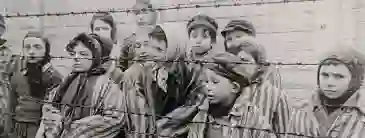The Holocaust stands as one of the most devastating atrocities in human records, representing the systematic, country-subsidized persecution and homicide of six million Jews via the Nazi regime throughout World War II. Beyond these superb numbers, hundreds of thousands of other marginalized organizations additionally fell sufferer. Remembering the Holocaust is important to make sure that the horrors of such hatred and intolerance are in no way repeated.
Historical Context
Pre-War Jewish Life in Europe
Before the Holocaust, Jewish communities thrived across Europe, contributing notably to way of life, technology, and trade. Cities like Warsaw and Vienna have been hubs of Jewish way of life and scholarship.
Rise of the Nazi Party in Germany
The Nazi Party, underneath Adolf Hitler, exploited financial turmoil and nationalist sentiments to gain strength. Their ideology, deeply rooted in anti-Semitism, framed Jews as the scapegoat for Germany’s struggles, paving the way for widespread recognition of their discriminatory regulations.
The Rise of Nazi Persecution
Early Discrimination and Segregation Laws
The Nazis commenced marginalizing Jews with legal guidelines that excluded them from public lifestyles, banned intermarriages, and constrained their employment opportunities.
The Nuremberg Laws of 1935
These legal guidelines institutionalized racial discrimination, stripping Jews of their citizenship and outlawing relationships between Jews and non-Jews.
Kristallnacht: The Night of Broken Glass
On November 9-10, 1938, a coordinated attack on Jewish groups destroyed synagogues, homes, and organizations, marking a violent escalation of Nazi persecution.
Escalation to Genocide
Establishment of Ghettos
Jews had been forcibly relocated to overcrowded ghettos, in which starvation and ailment had been rampant. Cities like Warsaw became symbols of not possible suffering.
Forced Labor Camps
Prisoners in exertions camps persevered in grueling situations, operating long hours with minimum sustenance, often leading to dying.
The “Final Solution” Policy
The Nazis devised a scientific plan to annihilate the Jewish populace, marking the beginning of commercial-scale genocide.
Concentration and Death Camps
Overview of Major Camps
Notorious camps like Auschwitz, Treblinka, and Dachau have become killing centers in which tens of millions were accomplished or died due to inhumane situations.
Inhumane Conditions and Atrocities
Prisoners faced unattainable horrors, which include hunger, compelled hard work, clinical experiments, and gas chambers.
Survivor Testimonies
Testimonies from survivors paint a harrowing picture of resilience amidst depression.
Role of the SS and Gestapo
The SS and Gestapo orchestrated mass executions and operated camps with ruthless performance, imposing terror during occupied territories.
Impact on Jewish Communities
The Holocaust obliterated Jewish communities, destroying centuries-vintage traditions and leaving a void that remains to these days.
Resistance and Resilience
Stories of Jewish Resistance
Despite overwhelming odds, Jews resisted through armed uprisings, escaping camps, and preserving their lifestyle.
The Warsaw Ghetto Uprising
In 1943, the Warsaw Ghetto Uprising have become a powerful symbol of defiance against Nazi oppression.
Courage of Non-Jewish Allies
Many non-Jews risked their lives to store Jews, exemplifying humanity’s capability for compassion even in the darkest times.
Liberation and Aftermath
Allied Forces Liberating Camps
The discovery of awareness camps by means of Allied forces discovered the extent of Nazi atrocities, surprising the sector.
Immediate Impact on Survivors
Survivors confronted the daunting venture of rebuilding their lives, regularly without families or homes to go back to.
War Crimes Trials
The Nuremberg Trials brought Nazi leaders to justice, setting up a precedent for prosecuting crimes against humanity.
Holocaust Memorials and Education
Yad Vashem and Other Memorials
Institutions like Yad Vashem hold the memory of sufferers and train future generations approximately the Holocaust.
Role of Museums and Education
Museums play a crucial function in coaching about the consequences of unchecked hatred.
Denial and Distortion
Holocaust denial actions attempt to distort records; however, schooling and remembrance remain powerful equipment to counter misinformation.
Lessons for Humanity
The Holocaust underscores the dangers of bigotry and the importance of standing against hatred to make certain a more inclusive and tolerant global.
Conclusion
The Holocaust serves as a somber reminder of what can happen when prejudice and hatred are left unchecked. By remembering those events, we honor the victims and reaffirm our dedication to a future unfastened from such atrocities.
For more informative content, explore our website and discover more about the inspiring journey of Carter the Body.
FAQs
- What became the Holocaust?
The Holocaust was the systematic persecution and murder of six million Jews and millions of others with the aid of the Nazi regime throughout World War II. - How many human beings died inside the Holocaust?
Approximately 11 million people, which include six million Jews, lost their lives at some point of the Holocaust. - What had been the Nuremberg Laws?
These had been racial legal guidelines enacted by the Nazis in 1935 that stripped Jews of their citizenship and institutionalized racial discrimination. - What is Holocaust denial?
Holocaust denial entails rejecting the data of the Holocaust, frequently influenced by means of anti-Semitic beliefs. - Why is Holocaust schooling crucial?
Education helps make sure that the atrocities of the Holocaust are in no way forgotten, selling tolerance and stopping destiny genocides.




